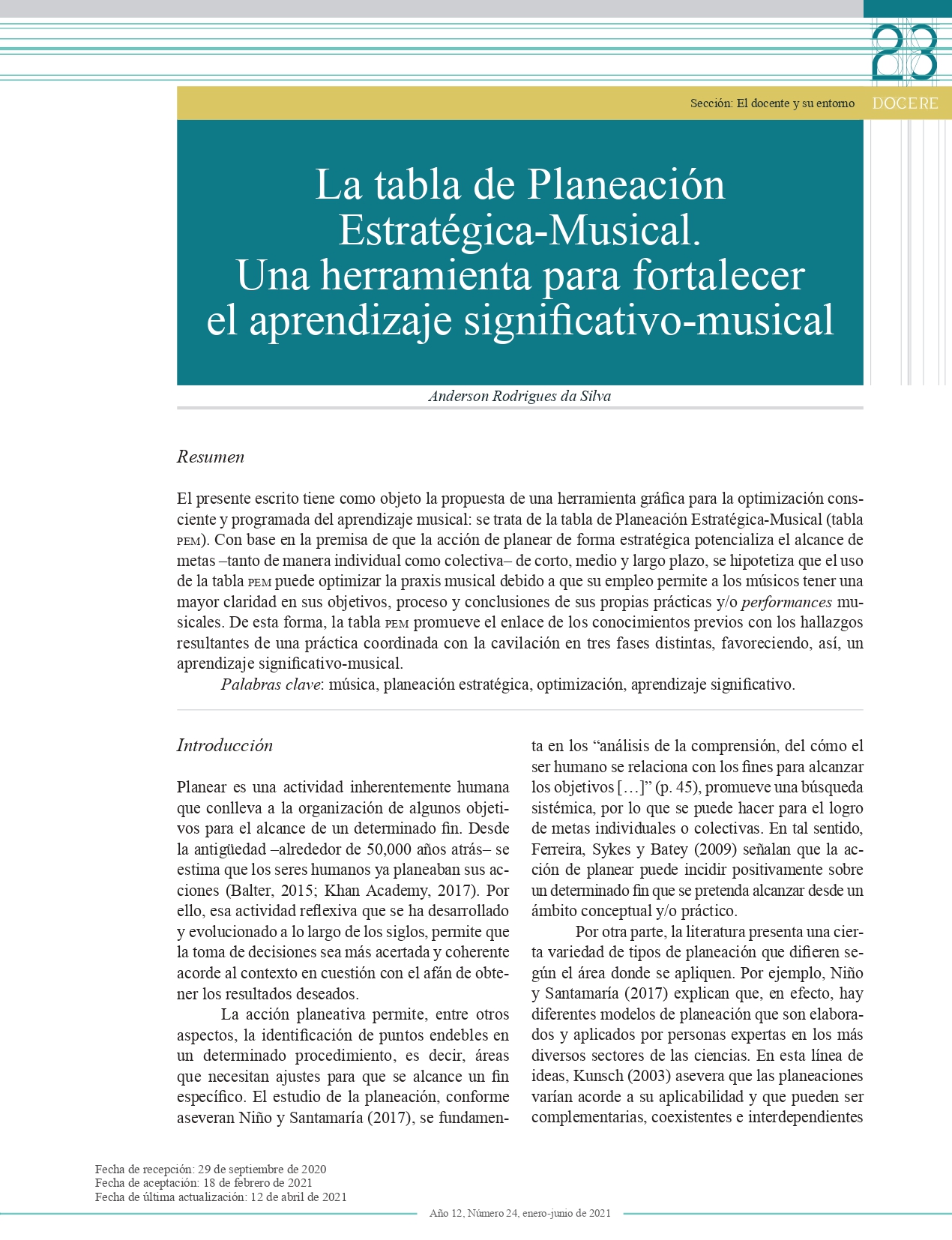The Musical-Strategic Planning Chart. A Tool to Strengthen the Musical-Meaningful Learning
DOI:
https://doi.org/10.33064/2021docere243331Keywords:
meaningful learning, music, strategic planning, optimizationAbstract
The following text aims to propose a graphic tool for conscious and programmed optimization of musical learning: This is the Musical-Strategic Planning Chart (MSPC). Based on the premise that the act of planning in a strategic way boosters the reaching of short, medium, and long-term goals individually and collectively, the hypothesis suggests that the use of the MSPC can optimize the musical praxis due to its implementation allows musicians to have a bigger clarity on their objectives, process, and conclusions of their own practices and/or musical performances. In such way, the MSPC promotes the linking of previous knowledge to resulting findings of coordinated practice with the pondering if three different phases, enhancing a musical-meaningful learning.
Translated by Mario Alejandro López De Luna
Downloads

Downloads
Published
How to Cite
Issue
Section
License
Esta obra está bajo una Licencia Creative Commons Atribución-NoComercial-CompartirIgual 4.0 Internacional.
El lector y/o usuario que utilice el material publicado en la revista DOCERE de la Universidad Autónoma de Aguascalientes, deberá en todos los casos: a) Reconocer la autoría del material utilizado, proporcionando un enlace a la licencia, además de indicar sí se han realizado cambios al material; b) Queda prohibido utilizar el material proveniente de la revista DOCERE, con finalidad comercial y, C) En los casos en los que se realice la remezcla, transformación o creación, a partir del material publicado de la revista DOCERE, se deberá dar reconocimiento de los derechos que correspondan a la Universidad Autónoma de Aguascalientes, en su carácter de titular de la materia protegible utilizada. En caso de infracción a lo antes dispuesto, el lector y/o usuario, se hará acreedor a las sanciones que establece la legislación de la materia.












